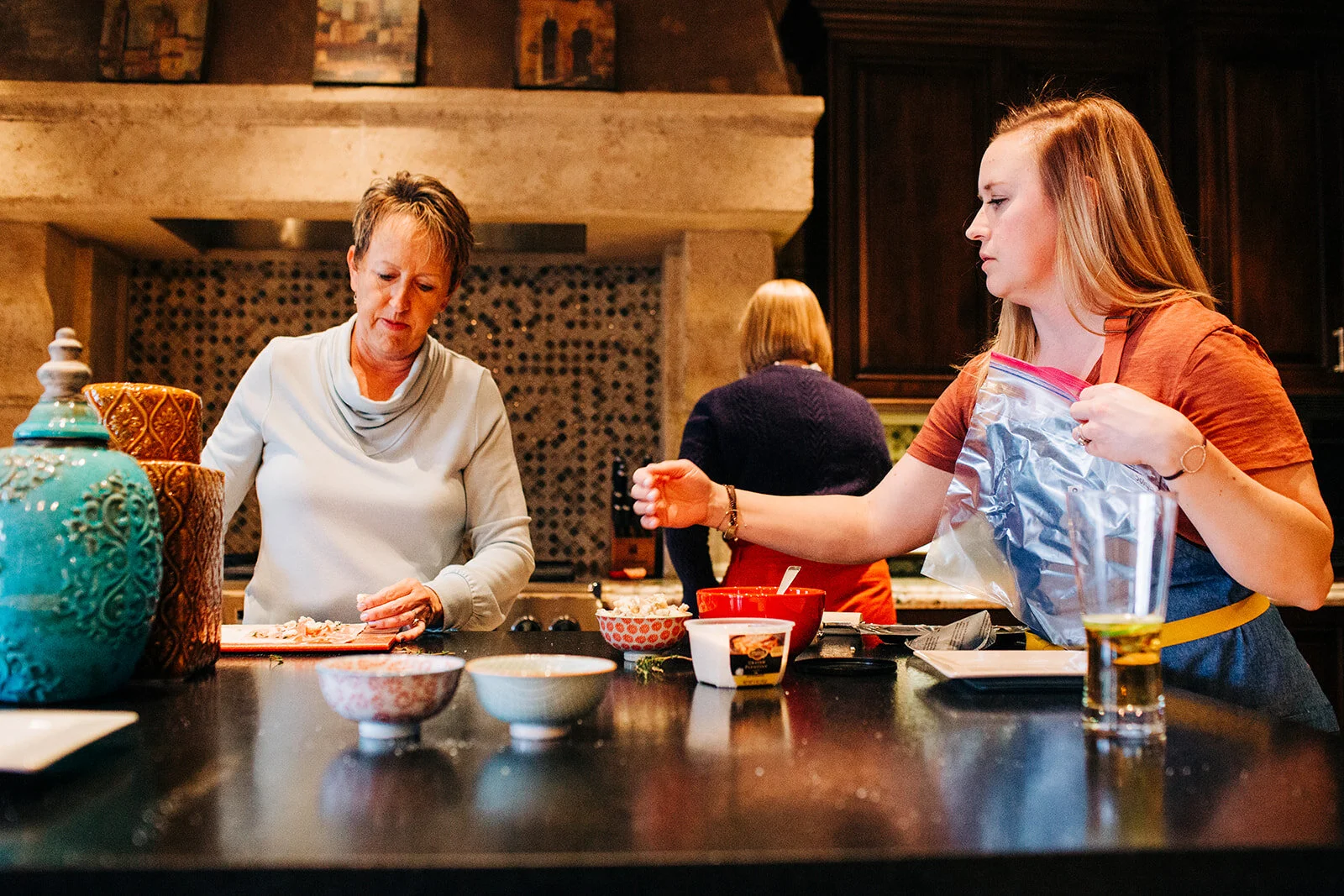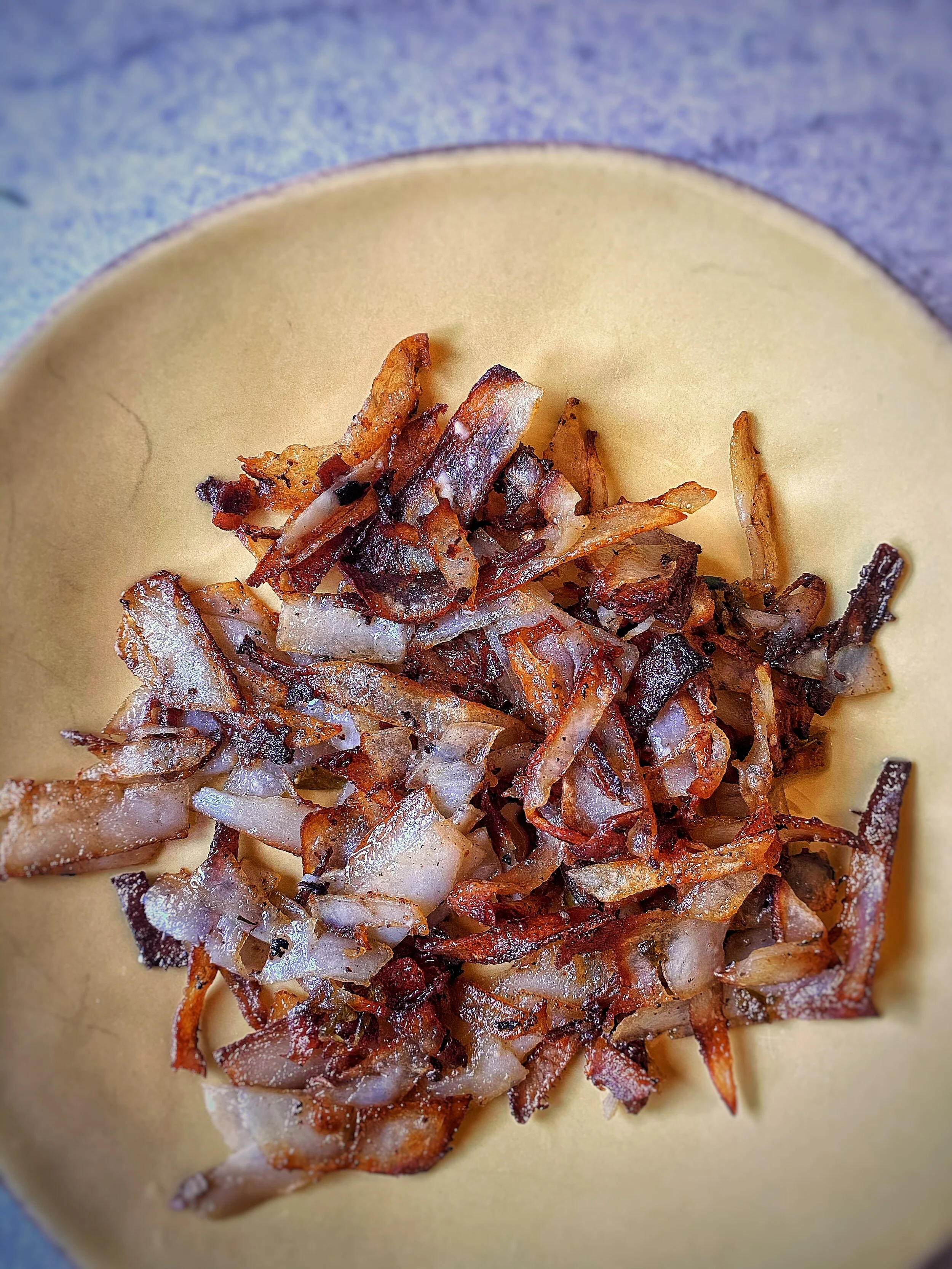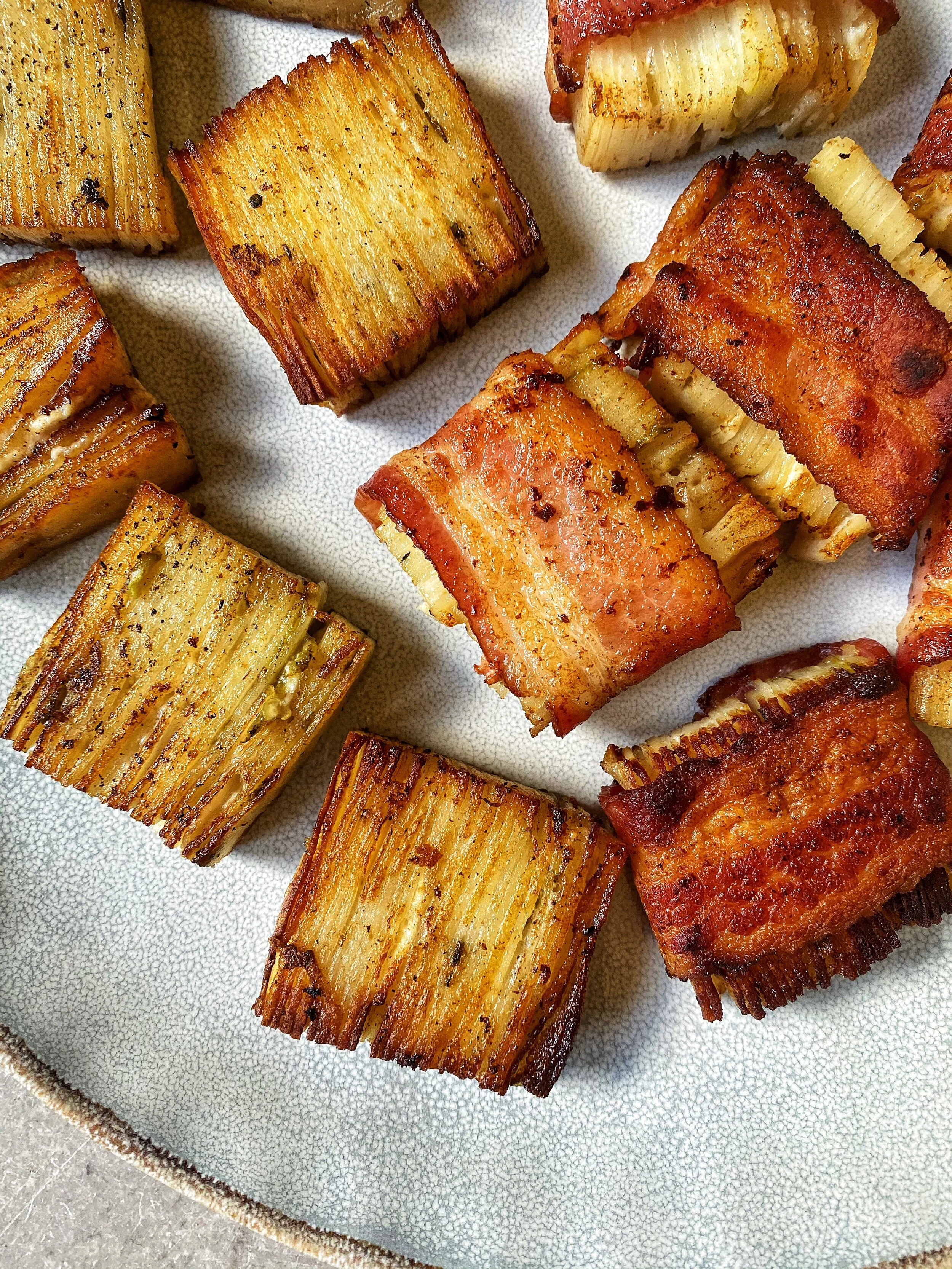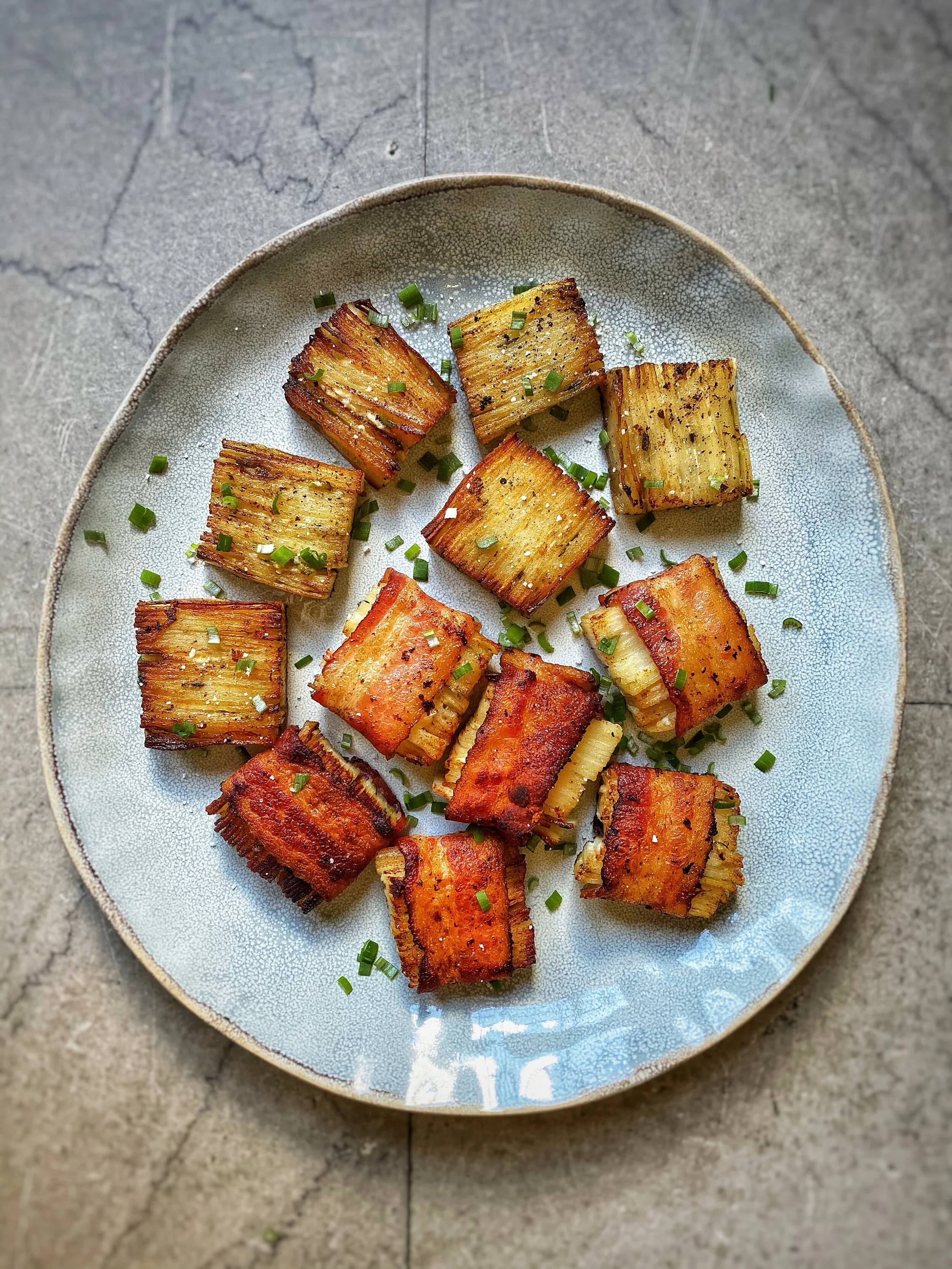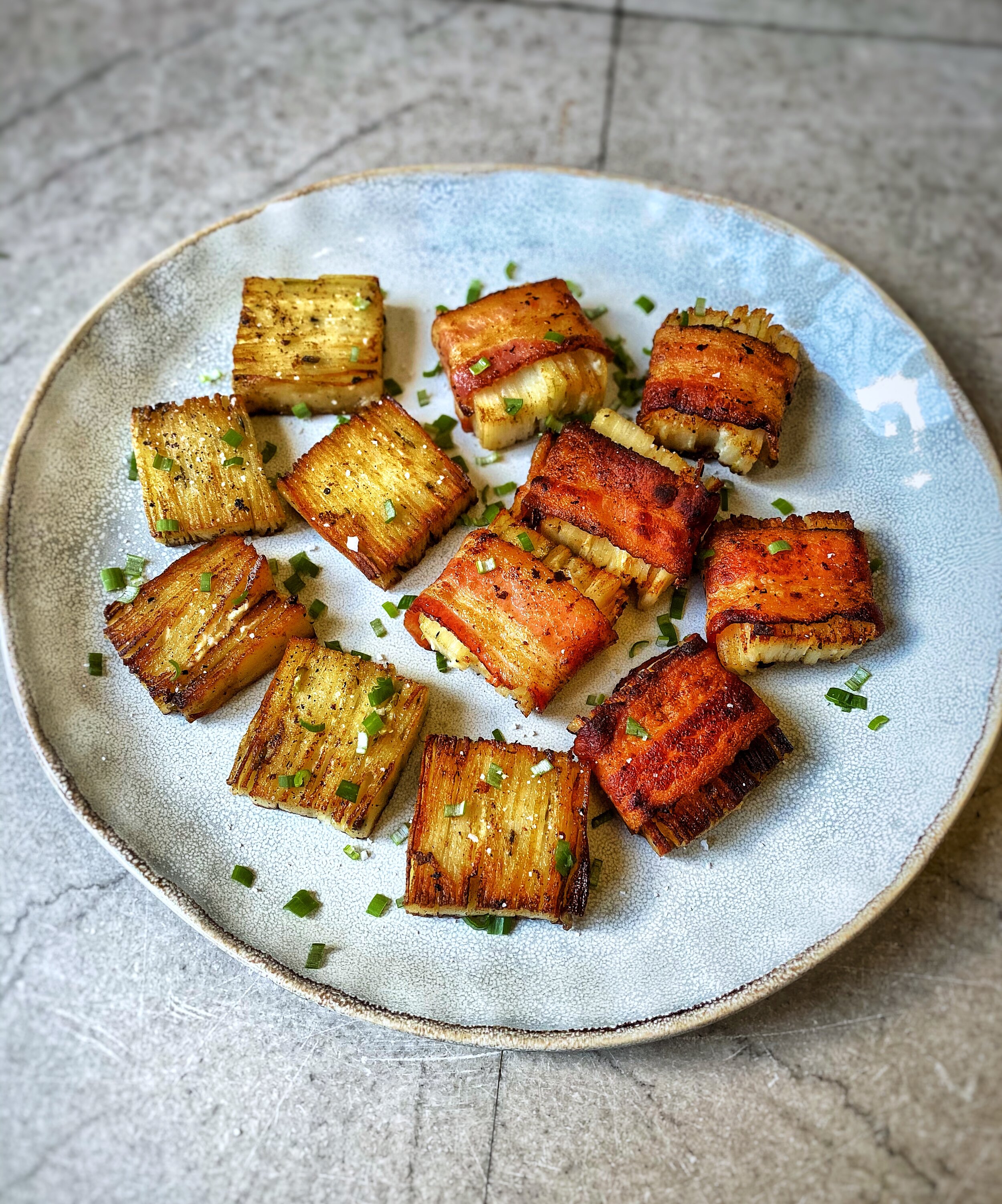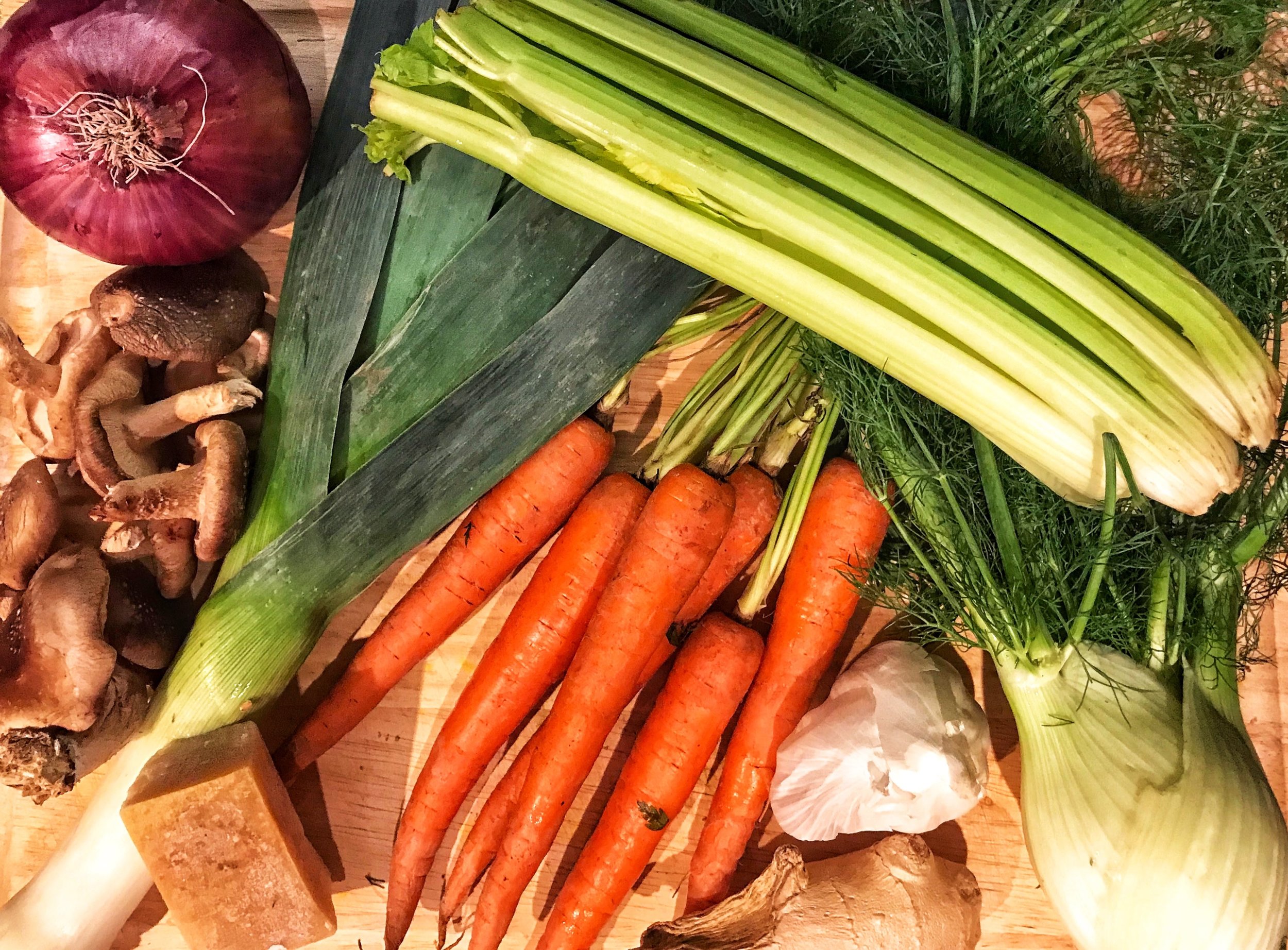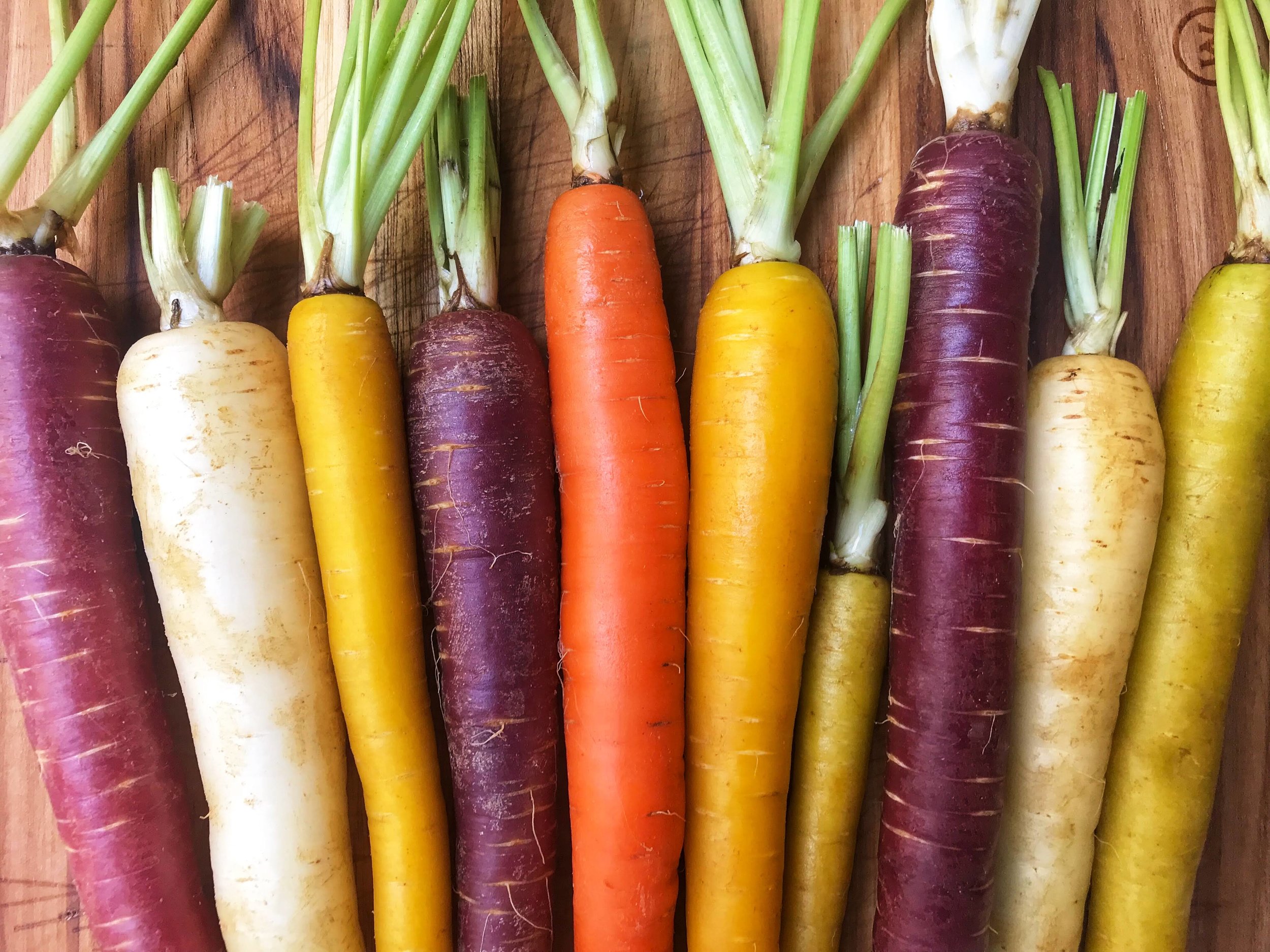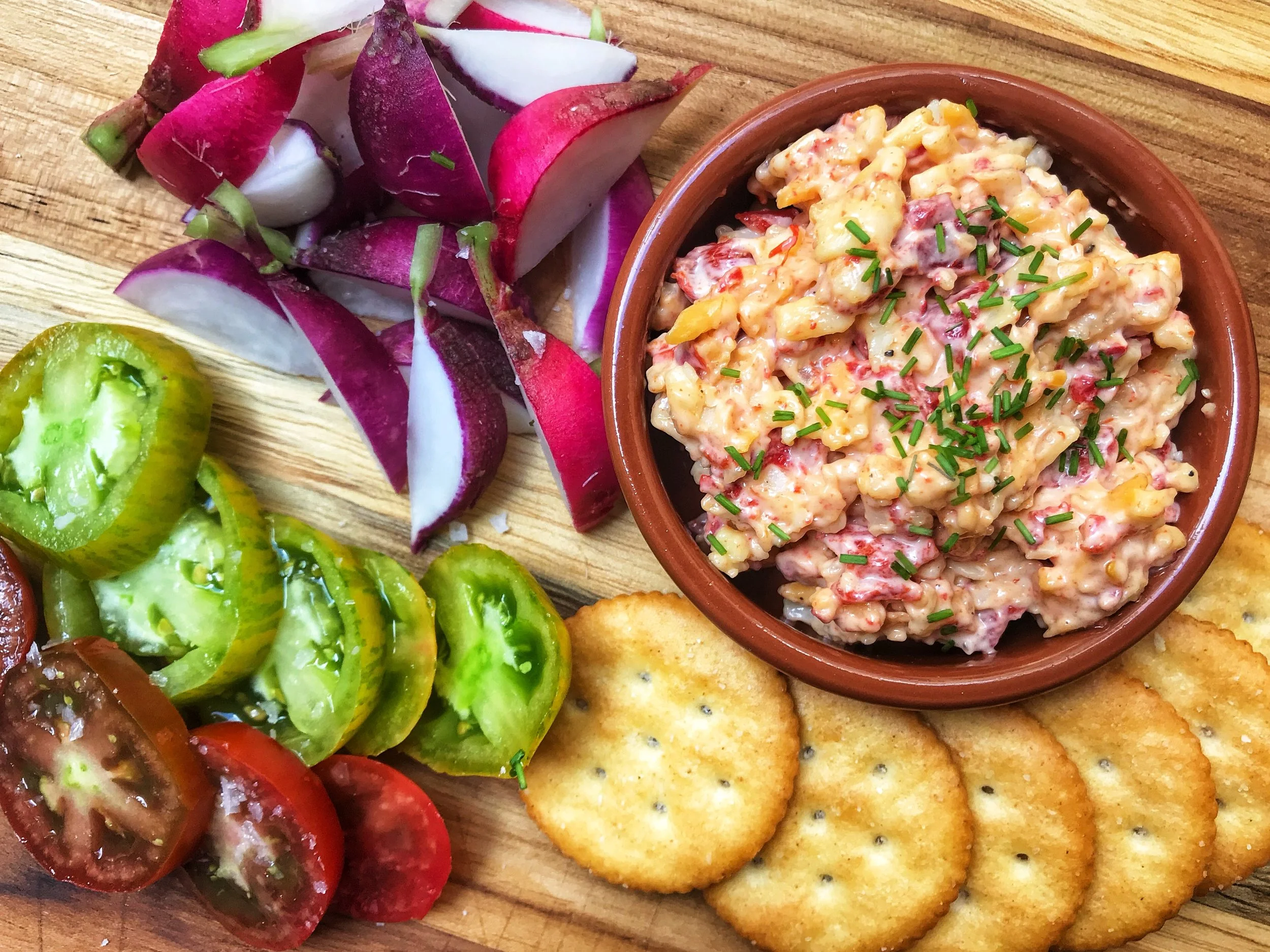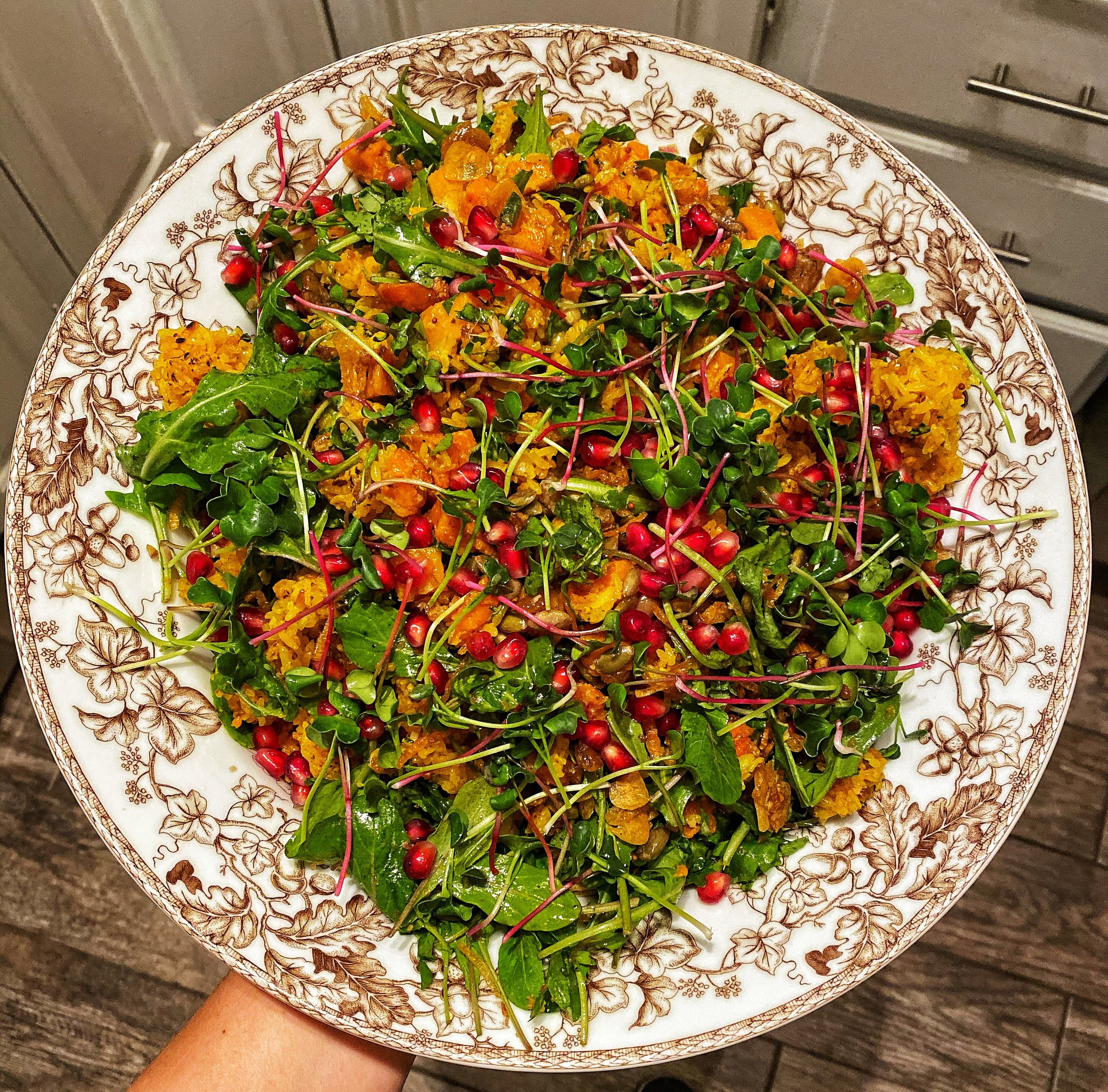Potato Pavés
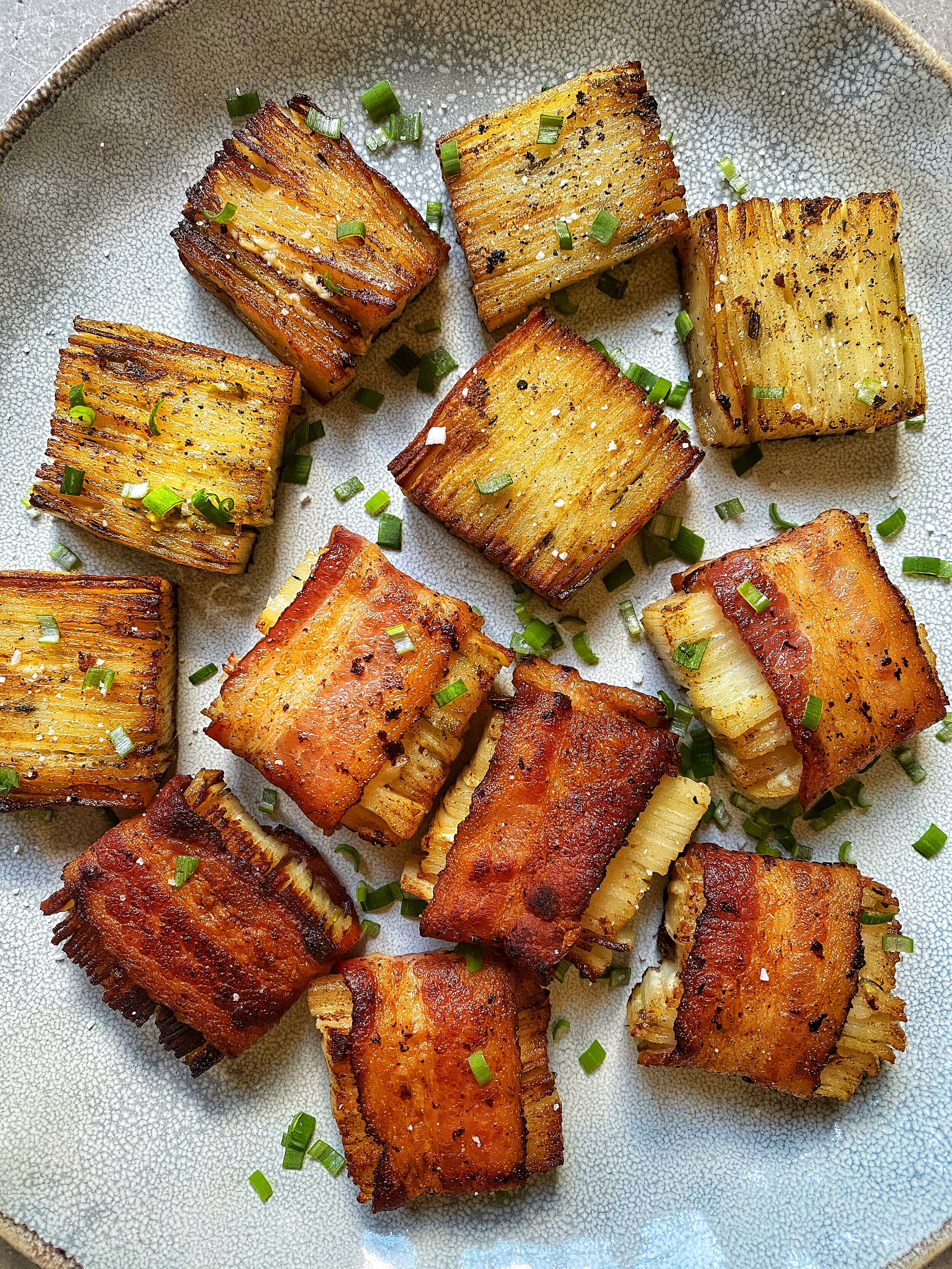
“Nothing is lost until your mother can’t find it.”
I’ve noticed, in my 32-years of being a daughter, that mother-child relationships eventually come full circle.
At the beginning, the mother will do anything for their child. Literally. They don’t really have a choice. Feeding, changing, clothing, feeding, changing, clothing. On and on and on. As the kid grows up, there are countless other things that mothers have to do - help with school, friends, save money, feed and clothe. The list goes on and on.
But eventually, as they grow up, they start to realize that while their mom would do anything for them, they would ALSO do anything for their mom - participate in family photos, call other family members to check-in, cook them their favorite meals. While these fail in comparison for the sacrifices moms have made for their kids, at the end of the day, we would do anything we could to return the favor.
Thanks, Mom. For everything you’ve ever done for Ali and I. And as I become a mom this year, I can only hope to be half as great a mom as you are. Trey and Baby Girl Clawson are lucky to have such an amazing grandmother.
Over the winter, we got to spend a week with my parents, sister, brother-in-law, and my little nephew in Phoenix. We got to play lots of golf, see our last NBA game of the year, and eat and drink lots together as a family. (And also take family photos! She captured some of us in our favorite part of the house.)
My mom had asked me to help her make a newer recipe that she was very excited about - Potato Pavés. She didn’t have a written recipe but instead watched a YouTube video numerous times to jot down the recipe.
So while I can’t make this for you in person for Mother’s Day, here is a written down recipe for you to follow the next time you are in the mood to make these!
Fry up the trimmed edges! They taste just as delicious.
This is a riff on Thomas Keller’s Potato Pavés recipe. Thinly sliced potatoes are coated in cream, layered in a loaf pan, baked, and weighted down. The layered loaf is then cut into small “pavés,” loosely translated to bricks, and pan-fried until golden brown. My mom had the idea to add some jalapeño and wrap the bricks in bacon. Two great changes I can get behind.
The assembly takes a little bit of time, and the loaf is best when stored in the fridge overnight. But this is a great side dish to make a day-ahead, fry up, and serve with steaks, a roast chicken, or grilled fish.
Russets are the best potatoes to use for this. If your loaf pan has tiered sides, use the shorter ones first for the bottom of the dish, and longer ones for the top.
I didn’t take the time to remove the seeds out from the jalapeño. If you are worried about spice, remove the seeds and ribs, or just eliminate all together.
Any woodsy herb like thyme or rosemary are great to use in the layers for this dish. Chives are the more traditional garnish, but I only had scallions. Close enough, right?
I find it easiest to have the garlic, jalapeño, herbs, salt and pepper all prepped in little bowls before you start layering. It gets a little messy going in and out of the bowl of cream.
The pavés look fanciest if you trim the edges, leaving some potato scraps behind. These are perfectly fine to fry up alongside the pavés. They still taste great!
Enjoy the recipe, Mom! And Happy Mother’s Day!
Potato Pavés
Makes 24 one-inch pavés
Ingredients:
1 cup heavy cream
2 - 2.5 pounds russet potatoes (I used 6 potatoes)
5 tablespoons unsalted butter, 1 tablespoon softened and 4 tablespoons cut into ½-inch cubes
1 jalapeño
4 fresh thyme sprigs
2 rosemary stems
3 garlic cloves
Salt and pepper
Canola oil
Minced fresh chives or green onions
Crunchy salt for garnish
Equipment:
Loaf pan
Parchment paper
Mandoline
Aluminum foil
Small piece of cardboard
Cast iron skillet
Directions:
Preheat the oven to 350°F.
Prepare the loaf pan. Cut two slices of parchment paper to line the inside of the pan, with a bit of overhang on each end. Use the 1 tablespoon of softened butter to spread across the inside of the pan. Place parchment pieces in the pan and spread butter over the paper as well.
Pour cream into a large mixing bowl and season with salt and pepper.
Trim the ends of the potatoes so that they fit in the loaf pans. Since most loaf pans are slightly tiered, start with the shorter potatoes on the bottom, then use the longer ones for the top of the pan.
Peel potatoes and discard peels. Using a mandoline, thinly slice the smaller potatoes and add to the bowl of cream. Stir to coat. Leave the longer potatoes for later. (If you are worried that they will get brown, place the unsliced potatoes in a bowl of cold water.)
Thinly slice the garlic and jalapeño and set aside. If you aren’t comfortable using the mandoline to slice them, grate the garlic with a microplane and finely mince the jalapeño instead. Finely chop the woody herbs and set aside. Cube the remaining 4 tablespoons of butter and set aside.
Place potato slices in a single layer, overlapping as needed, in the bottom on the loaf pan. Drop a few cubes of butter, slices of garlic, jalapeño slices, herbs, salt and pepper. Repeat the layering process, gently pressing down on the potatoes between each layer.
When you start to run low on potatoes in the cream, slice the remaining potatoes and add to the cream. Stir to coat. Continue layering until you reach the top of the pan, or you use all the potatoes.
Wrap the loaf pan tightly in foil and bake in the 350°F oven for 1 hour and 50 minutes. Let cool for 15 minutes.
Trim a piece of cardboard (I used an empty Kleenex box) to fit on top of the loaf pan and wrap in foil. Place on top of the potatoes and weigh down with cans or jars. Set in the fridge for at least 6 hours, preferably overnight. Potatoes can stay in the loaf pan for up to 2 days.
When ready to serve, remove from the fridge. Run an offset spatula around the outside to loosen the paper. Pull the potatoes out of the pan and invert on a cutting board. Trim the sides to make an even rectangle. Keep the scraps to fry up!
Slice down the middle lengthwise, then cut each half into twelve smaller bricks, aka “pavés.”
If wrapping the pavés in bacon, cut the bacon slices in half and wrap around a brick of potatoes. Wrap the bacon perpendicular to the slices of potatoes to help keep the layers together.
Heat canola oil in a cast-iron pan. Add the bacon-wrapped potatoes, seam side down. Cook, undisturbed for 4-5 minutes. Carefully flip over and cook on the opposite side for an additional 3-5 minutes. Using tongs, rotate bricks to cook bacon on the short sides. Remove and set on a paper towel-lined plate. Repeat with remaining potatoes.
If you aren’t using bacon, simply heat the oil in the pan, and add the potatoes. Cook on each side for 4-5 minutes, until potatoes are golden brown and crispy.
To serve, arrange on a platter and garnish with chopped chives or green onions, and crunchy salt.

